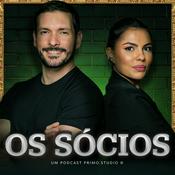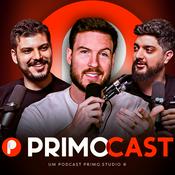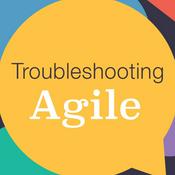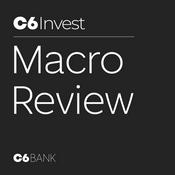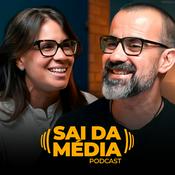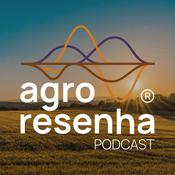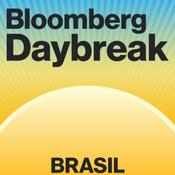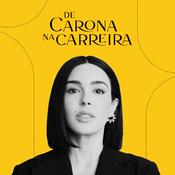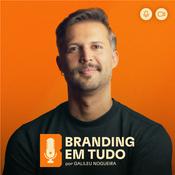409 episódios

How to Get More from a Sales Mentor—and Be One Who Matters
18/12/2025 | 46min
Why Do So Many Mentorship Relationships Fail Before They Ever Work? “You can't be more committed to somebody’s success than they are.” That insight comes from Colleen Stanley, author of Be the Mentor Who Mattered, during a recent conversation on the Sales Gravy Podcast. It's a simple statement that cuts through all the noise about mentorship and gets to the heart of why most mentoring relationships fail to deliver results. Sales professionals constantly talk about wanting mentors. They want access to someone who's been there, done that, and can show them the shortcuts. But when they get that access, they squander it. They show up unprepared. They argue with advice. They never implement what they learn. On the flip side, experienced sales leaders say they want to give back and mentor the next generation. But they get burned out after investing time in people who don't follow through. So they stop offering help altogether. The problem isn't a lack of willing mentors or eager mentees. The problem is that nobody understands their role in making mentorship work. What Mentees Get Wrong About Mentorship Most people treat mentorship like a magic pill, assuming that simply being near someone successful will transfer that success to them. It doesn’t work that way. Getting real value from a mentor requires more than just showing up. You need to actively do the work that makes their guidance worthwhile. Start by focusing on these key actions: Ask Directly The biggest barrier to mentorship isn’t that successful people won’t help you. It’s that you never ask. You assume they’re too busy, too important, or too far removed from your situation to care. You’re wrong on all three counts. Successful people got where they are because someone helped them along the way. Most of them want to pay that forward. But they’re not mind readers. If you want help, ask for it directly. Respect Their Time When you do ask, come prepared. Don’t ask for “15 minutes to pick your brain.” That’s code for “I haven’t thought about what I actually need, so I’m going to waste your time figuring it out.” Instead, be specific. “I’m struggling with qualifying early in the sales process. Could you share how you approach qualification conversations?” Specific questions get specific answers. Vague requests get vague responses—or none at all. Do What They Tell You to Do This is where most mentoring relationships die. You ask for advice. You get great guidance. Then you come back with a list of reasons why it won’t work for your situation. Stop that. If you’re going to ask someone for their expertise, try their approach before explaining why your situation is different. You’re there because they know more than you do. Acting like you know better defeats the entire purpose. Your mentor’s reward isn’t money or recognition. It’s watching you take their advice and succeed because of it. When you implement what they teach and come back with results, they’ll invest even more in your development. When you make excuses, they’ll move on. Take Tough Feedback Without Getting Defensive Not every mentor has read the latest book on constructive feedback. Some of them are direct or blunt. Take it anyway. When someone cares enough about your success to tell you the truth—even when it’s uncomfortable—that’s a gift. Don’t reject it because it wasn’t wrapped perfectly. The best mentors don’t sugarcoat feedback because they respect you enough to be honest. They see potential in you that you can’t see yet, and they’re not going to let you waste it by staying comfortable. What Mentors Get Wrong About Mentorship If you’re in a position to mentor others, you already know the frustration of investing in someone who doesn’t follow through. It’s exhausting. Eventually, you start to wonder if it’s worth your time at all. Before you close yourself off completely, it’s important to understand the common patterns that cause mentoring relationships to stall. Waiting for the Perfect Mentee There is no perfect mentee. Everyone who asks for your help is going to be rough around the edges. They’ll make mistakes. They might waste some of your time. That’s the cost of mentoring. The real question isn’t whether someone is polished. It’s whether they’re committed. Are they showing up prepared? Are they implementing what you teach? Are they making progress, even if it’s slow? If the answer is yes, keep investing. If it’s no, redirect your energy elsewhere. Just don’t let one bad experience make you cynical about everyone. Trying to Control Their Path Your job as a mentor isn’t to create a clone of yourself. It’s to help someone develop their own approach using the principles that made you successful. They might take your advice and apply it differently. They might adapt it to their personality, their market, or their selling style. That’s not wrong. That’s the point. Stay unattached to the outcome. You can’t be more invested in their success than they are. Give them your best insights, support their growth, and let them own the results. Mentoring the Wrong People Not everyone needs your specific expertise. Some people need tactical help with prospecting. Some need strategic guidance. Others need coaching on emotional intelligence. Look for the multipliers. Mentor people who will take what you teach them and use it to help others. When someone you mentor goes on to mentor others, your impact grows far beyond what you could achieve alone. That doesn’t mean only mentoring future executives. It means finding people who are genuinely committed to growth and generous enough to share what they learn. The Real Value of Mentorship Mentorship isn’t a transaction. It’s not about what you can get from someone more successful or what you owe someone less experienced. It’s about creating a community where people help each other get better. Where progress matters more than perfection. Where tough feedback is welcomed because everyone knows it comes from a place of care. Having someone in your corner who believes in your potential—even when you don’t—can be the difference between quitting and breaking through. But that only works if both sides understand their role. Mentees must show up ready to learn and willing to act. Mentors must show up ready to tell the truth and willing to invest. Find the mentors who will challenge you. Be the mentor who changes someone else’s trajectory. Ready to take the next step in your development? Finding the right mentor or coach can transform your sales career—if you know what to look for. Learn how to identify the coach who’s right for you with our FREE How to Find the Right Coach for You Guide.

Why Rejection Hurts and What To Do About It (Ask Jeb)
16/12/2025 | 21min
Here's a truth that'll make you uncomfortable: Getting rejected isn't the real problem. The real problem is that you're not doing the work upfront to lower the probability of rejection in the first place. That's the insight that hit when Wendy Ramirez, a leading Mexican sales expert and author of Lo que nadie habla de las ventas: Estrategias para no ser llamarada de petate or What Nobody Talks About in Sales: Strategies to Avoid Being a Flash in the Pan, joined this week's episode about handling rejection on Ask Jeb on The Sales Gravy Podcast. After forty years in sales, I've been rejected yesterday, I'll get rejected tomorrow, and I've been rejected so many times that I almost don't even feel it anymore. But that doesn't mean you can just "let it roll off your back" like some sales trainers tell you. If you're struggling with rejection, you're not alone. And more importantly, you're not broken. There's a biological reason it hurts so badly, and there are concrete techniques you can use to handle it. The Biology of Rejection: Why Your Brain Is Working Against You Here's what most sales trainers won't tell you: Rejection is supposed to hurt. It's baked into your DNA. Forty thousand years ago, human beings lived in small groups around campfires. If you got kicked out of the group and walked away from that campfire into the dark, you were in danger. You were part of the food chain. There were things out there hunting you, rival tribes fighting over scarce resources, and being alone meant you probably weren't going to pass on your genes. So human beings who avoided rejection were more likely to survive. This fear of rejection became an evolutionary advantage, and it's still with us today. That's why selling is so hard. It's why most people don't want to go into sales. Walk into the accounting department and ask if anyone wants to make cold calls with you. They're going to look at you like you've got four heads because nobody wants to be in a profession where you have to do something that unnatural. This avoidance of rejection serves us really well in most of our life. You need to get along with your family, your coworkers, other people in the world. Knowing where the line is that would get you rejected is super important to being able to work as a team. But in sales? It's killing your performance. The Truth About Objections: You're Creating Them When people reject you or give you an objection, what they're expressing is their fear. They're expressing their fear of moving forward, their fear of change, their fear about whether or not you'll do what you say you're going to do. And here's the brutal part: Most of the time, you created that fear. The easiest way to deal with an objection is to do good discovery and do a good job in the selling process. When salespeople make the mistake of not doing any discovery, they don't have any ammunition. So the rejection sounds like this: "Your price is too high." That's the only way a person really knows how to explain it. If they don't like you, they'll say, "We need to go think about this." Think about it this way. If you do a great job of building the relationship, asking questions, listening, getting all of their pain and aspirations on the table, and then telling their story back to them in the context of how you can help them solve their problems, then you've earned the right to ask them. When you ask and they give you an objection, you know what to do because you already have that information. You're just bringing back and putting on the table the things that they already told you. The worst rejections I've gotten? They're usually when I lost a deal because I didn't do discovery. And then I found out after the fact that I missed something I shouldn't have missed. It's not so much the rejection that hurts. It's the shame and the gut punch that I didn't do my job as a salesperson, and therefore I created the environment that made that objection so big that I couldn't get past it because I had no information to work with. The Ledge Technique: Your Magic Quarter Second Let's get practical. You're on a prospecting call, you're engaging another person, and they hit you with an objection which feels like rejection. What do you do? Use a technique called the ledge. Neuroscientists would call it the magic quarter second that allows your executive brain (your prefrontal cortex) to get in control of your emotional brain (your limbic system) and that little structure inside your brain called the amygdala that triggers the fight or flight response. The ledge is just something you've memorized that you say automatically whenever you get that particular objection. The thing about prospecting objections is that we know every potential one. They're not surprising. People are going to say, "I don't have any time," "I'm not interested," "I'm already working with someone," "Your prices are too high," "This is not a good time for me," "I'm not the right person." So if someone says, "I'm too busy right now," I just say, "I figured you would be. And that's exactly why I called." That's all I say. The reason I have that memorized is because when they say that, rather than getting consumed by the fight or flight response, I know exactly what to say. In that magic quarter second, my brain that's smart takes over and says, "This is not a threat. This is just a person who says they don't have enough time right now, and you know exactly how to handle it." Relating: The Slower Form of the Ledge If you're in a slower type of objection (let's say you're asking someone to buy from you), use a form of the ledge by relating with them. When someone gives you an objection, they're expecting conflict because we're just human beings. If I tell you no, I'm expecting you to come back at me. So they give you the objection and they're ready for it. If you punch back, they're going to punch back. Everybody loses. But instead, if you relate to them, you lower the temperature. You get on their side of the table. You show empathy without agreeing with them. Here's what that sounds like in practice: Someone says, "This is more than I wanted to pay." You could say, "Well, look, it's really not that expensive and you're going to get so much out of it." Or you could say, "I totally get where you're coming from. It sounds to me like you're someone who makes really good decisions with their money." You're not agreeing that the price is too high. You're agreeing that they're a person who makes good decisions with their money. You're lowering the conflict level and increasing the collaborative level. You're diffusing them and breaking their pattern. Then you can go into, "When you say it's a little bit more than you wanted to pay, how do you mean? What does that mean to you?" But you always start with relating to them. The One Basic Truth About Objections Here's something you need to understand: In every sales conversation, while facing every objection, it is the human being that has the greatest emotional discipline that is most likely to have control over the conversation. And if you control the conversation, you can handle the objection. This is called relaxed assertive confidence. When you demonstrate this behavior, it almost acts like a magnet. People lean into you. And emotionally (because emotions are contagious), it causes them to respond in kind. When you come off as relaxed and confident, suddenly they lower their conflict level and they become more confident in you as well. There's nothing that handles objections better than pure old confidence. Persistence Always Finds a Way to Win Let me leave you with this: Persistence always finds a way to win. Always. In the US, 44 percent of salespeople only face rejection once before they give up. 78 percent give up after asking twice. 91 percent give up after asking only four times. But on average, it takes eight asks to get someone to say yes to you. So think about that. The statistics are in your favor. The more you're persistent, the more you keep asking, the more likely you're going to get what you want. The more you face rejection, the more likely you're going to get what you want. The inspirational part? Doing that is really hard. It takes discipline, and discipline is defined as sacrificing what you want now for what you want most. The easiest, fastest way to put on that emotional armor and dive into objections and rejections is to know exactly what it is that you want. So that in that moment when your brain is saying to you, "Run, don't do this, don't face it," you remember that on the other side of that rejection is the one thing that you want more than anything else in the world. And you're willing to go through it, around it, under it. No matter what it takes. You're willing to do whatever it takes to get that thing that you want. That's when rejection stops being the problem and starts being just another step in your process. Ready to transform your prospecting approach and fill your pipeline? Grab a copy of The LinkedIn Edge, Jeb’s latest book on combining LinkedIn, AI, and proven outbound strategies to sell more and close bigger deals.

How to Sell More to Small Businesses Before Year-End: The Tax Strategy Salespeople Miss (Money Monday)
14/12/2025 | 9min
If you’ve been looking for a way to hit or exceed your annual quota, qualify for President's Club, or simply earn a bigger paycheck or bonus, focusing on helping business owners reduce their tax burden by investing in your product, service, or software in the final weeks of the year can give you the edge you need to get more sales closed. Business Owners are Motivated to Reduce Taxes In the United States, there are millions of SMBs, and the vast majority of these businesses are what we call pass-through organizations for tax purposes. This means that the owners or partners in these businesses report the profits on their personal tax filings. Unlike big companies, small companies don’t have the luxury of rolling profits over to the next year. So whatever they made this year, they have to pay taxes on. As the calendar winds down, business owners are often motivated to invest in products, services, and software solutions in order to reduce taxable income. In other words, if a business has shown strong profits throughout the year, its owners might be keen to spend some of that money on improving their operations, expanding their capabilities, or streamlining their processes—right now—rather than hand over a large chunk of their profits to Uncle Sam come tax season. Business Owners Hate Paying Taxes To understand why this year-end period is so critical, let’s get into the mindset of a small or medium-sized business owner. Unlike large enterprises with multiple departments and complex accounting strategies, SMB owners are often personally invested in the company’s financial results because those results are essentially their income. It’s how they pay their mortgage and put food on the table. For this reason, they watch their revenue and expenses closely. As the year comes to an end, they’re looking at their bottom line and thinking about the upcoming tax bill. For many of these business owners, profit is a double-edged sword. Don’t get me wrong, they want to make a profit. But at some point, too much profit triggers a much higher tax bill. If there is one thing I know about small and medium-sized business owners, it's that they hate taxes. They are always looking for ways to legally minimize their tax liability. One easy and productive way to do this is to make fully or partially depreciable investments in the business before December 31st. That could mean buying new equipment, software, training packages, or services that will not only improve the business long-term but also reduce taxable income for the current year. An Urgent Need to Spend As a salesperson, the key takeaway here is that your prospects have a natural, time-bound incentive to spend. If you can position your product or service as the right investment at the right time, you might find it easier to close those deals that seemed just out of reach during the rest of the year. And by the way, if you are dealing with decision-makers who are pushing off decisions to next year, this is a great way to get past that objection. Framing Your Business Case I want to be clear, though, that most businesses are not going to spend money for the sake of spending money. Savvy business owners want to reduce taxes and do the right thing for their company. Therefore, you can’t just be transactional. You still must follow the sales process and build a bridge to the value of tax savings AND business improvement when making your business case. It’s all about framing your product or service as a strategic investment rather than a mere expense. For example: If you sell software tools that improve operational efficiency, make the case for how your solution will help them save on labor costs, reduce errors, and streamline workflows. If you’re selling advertising, highlight how a year-end launch of a new campaign will lead to immediate results that set the stage for a strong Q1. If you sell capital equipment, walk them through how the new equipment will make them more productive and help them expand their business in the new year. The key is to connect the value of your offering directly to the timing. Consider messaging like: “This is an opportune moment to upgrade your systems, so you’ll enter the new year with a competitive edge and potentially lower your tax liabilities this season.” “By getting your campaign locked in before the year closes, you can reap immediate tax benefits while ensuring your advertising starts generating leads in January when you need them the most.” "If we get the equipment ordered now, it will be delivered in Q1, giving you plenty of time to get a high ROI next year." When you can tie the ROI of your product to both tangible improvements and the financial perks of year-end spending, the business case becomes much more compelling, and you will sell more. Tailor Your Approach While the end-of-year tax incentive is a common denominator, not every SMB is identical. Some might be profitable but cash-constrained, while others have capital burning a hole in their pockets. Some may be in sectors that had a booming year, while others are just recovering from a difficult market. The more you understand the unique challenges and goals of each prospect you’re targeting, the better you can tailor your approach. Before you pick up the phone, walk through their door, or send an email, do some research. Check out their recent announcements, whether they’re hiring or expanding. Look into trends in their industry. Understanding these nuances will help you fine-tune your messaging. If you know a business is tight on cash, emphasize flexible payment plans or financing options. If the business is flush with profit, reinforce the immediate tax advantage and the strategic value of reinvesting those funds. Empathy and relevance are your allies here. Show that you understand their position and that your solution aligns perfectly with their current goals. That personal touch, combined with the natural urgency of year-end, is a powerful recipe for closing the deal. Lead With Urgency: Clear, Direct, Compelling I don’t want to sweep under the rug how important timing and urgency are with this tactic. While you don’t want to be completely transactional, you do want to be direct. As we approach the end of the year, many SMB owners have a long to-do list: Finalizing paperwork, inventory checks, reviewing vendor contracts, preparing for holiday promotions, and on and on. They’re busy. They have limited time to spend on sales pitches. This means your outreach needs to be respectful of their schedule and also clear, direct, and compelling. Say right away: “I’m reaching out before the year ends because I have a solution that can help you maximize your tax benefits this year and help you grow your business next year." Being direct and to the point respects their time and sets the context immediately. If you need more help with direct and to-the-point messaging, grab your copy of my book, Fanatical Prospecting, and review Because Statements. It’s crucial that you create and maintain a sense of urgency. Not the aggressive, pushy kind, but a natural urgency rooted in a real calendar event: The year-end. The clock is ticking, and if they don’t make their purchase by December 31st, they will miss out on the potential tax advantages. This deadline isn’t artificial—it’s a reality. Use it to frame your conversations. Urgency helps prospects prioritize your offer over other distractions in their busy schedule. Handling Objections You might encounter objections like: “We’re too busy to consider new solutions right now,” or “We don’t have enough budget.” In these cases, it’s wise to highlight the cost-saving and tax benefits again. Stress that investing now can actually put them in a better position financially. Remind them that waiting until next year could mean missing out on an opportunity to reduce this year’s taxable income. If time is an issue, propose a quick and efficient implementation plan. Show them that you can be agile and help them integrate the solution without massive downtime. If budget is a concern, consider promotions, discounts, or favorable financing terms. Sometimes, offering a small year-end incentive can tip the scales in your favor. The Five Keys to Selling More to SMBs at the End of the Year SMBs have a natural incentive to invest before year-end: They want to reduce their taxable income and set themselves up for a strong next year. Frame your product as a strategic investment: Highlight the value, ROI, and tax benefits that come with a year-end purchase. Avoid being transactional: Follow the sales process and position yourself as a partner who can help them navigate this critical period. Tailor your approach to each SMB’s situation: Research their needs and adjust your prospecting message accordingly, showing empathy and relevance. Create urgency with a real deadline: The calendar itself is your ally; emphasize that the benefits come from acting before December 31st. Here's the deal, though: Do not wait. Start this process now. The low-hanging fruit is out there, but it will rot on the vine if you fail to pick before the sand runs out of the hourglass this year. Check out the BRAND NEW Jeb Blount Ultimate Sales Success Box Set. It's the perfect gift for the sales professional in your life!

Stop Worrying About What Your Mom Thinks of Your LinkedIn
11/12/2025 | 37min
Is Your LinkedIn Personal Branding Built for Buyers or Bystanders? "Respectfully, you are not my audience." Performance coach Giselle Ugarte said that on a recent episode of the Sales Gravy Podcast, and it might be the most liberating thing you'll hear about LinkedIn personal branding this year. Because somewhere between building your profile and hitting publish on that post, you've started making decisions based on what your college roommate might think. Or your former boss. Or yes, your mom. The hard truth? None of them are writing you commission checks. The Real Reason Your LinkedIn Personal Branding Falls Flat You've heard "be authentic" and "show up as yourself" so often that the advice has lost all meaning. So you end up in a strange middle ground where you’re not polished enough to impress executives and not human enough to connect with actual buyers. Your LinkedIn personal branding suffers because you're creating content for ghosts. People who will never hire you, never refer you, never sign a contract. You're worried about the wrong audience, and that hesitation shows up in every word you type. Think about the last post you almost published but didn't. What stopped you? Probably not a legitimate business concern. More likely, you had a flash of "what will people think?" and that voice didn't belong to your ideal client. It belonged to someone in your network who wouldn't buy from you if you were the last salesperson on earth. Who Your LinkedIn Content Is Really For Your LinkedIn personal branding should speak to three groups: Current clients Prospective clients People who can refer you to clients That’s it. Everyone else is background noise. When you post about closing a tough deal, your brother who works in IT might think you're bragging. Your client, who fought through the same challenge, is nodding in agreement. When you share a lesson from a deal that went sideways, your high school friend might wonder why you're airing dirty laundry. Your prospect is realizing you understand their world. The disconnect happens because you're trying to serve two masters. You want to build real relationships with buyers while also maintaining some imaginary professional image for people who have zero impact on your business. The Transform 20: LinkedIn Personal Branding That Actually Works If you're going to shift your LinkedIn personal branding from performative to productive, you need a system. Not another "post three times a week" generic advice pile, but something that forces you to focus on real humans instead of vanity metrics. Giselle’s practical framework, Transform 20, breaks down into four daily actions, each designed to build actual relationships: Connect with 5 new people. Not random connections. People you met this week, people on your calendar, people who recognize your face. Every request should feel familiar to them. Send 5 meaningful messages. Check in. Reference something personal. End with a question. “Let me know” is where leads go to die. Meaningful DMs teach the algorithm who matters to you — and who should see your content. Leave 5 meaningful comments. Two to three sentences. Add context. Reintroduce yourself if needed. A thoughtful comment builds more trust than another like or emoji ever will. Record 5 one-to-one videos. Sixty seconds or less. “Hey, I was thinking about you because…” It’s a pattern interrupt in an inbox full of text and one of the fastest ways to stand out. This is where confidence compounds. Twenty actions. Most people won't do it because it feels like work. But if you woke up to 20 qualified leads tomorrow, would that change your business? That's what you're building here. What Your LinkedIn Profile Should Actually Show Buyers want to know you’re a real person. That you have a family, hobbies, interests, failures, and lessons. That you care about something besides your quota. If you blur your Zoom background because you think it’s more professional, you’re missing an opportunity. Let them see the bookshelf, the Peloton, the framed photo. These details give people something to ask about and a reason to remember you. The same goes for your LinkedIn headline. Yes, include your title. But also include the detail that creates connection. "Mom of four," or "Proud Michigan alum," or whatever matters to you and might matter to them. Make it easier for people to find common ground with you. Stop Creating Content for People Who Will Never Buy You already know who matters: current clients, prospective clients, and people who can refer you to clients. Your former colleague who always has something snarky to say about your posts? They've never sent you a referral. Your friend from college who thinks sales is beneath them? They're not signing contracts. Your family member who wants you to be more buttoned up? They're not in your market. Have the clarity to know that you can't build an effective LinkedIn personal branding presence while trying to please everyone. You'll end up pleasing no one, least of all the people who could actually benefit from working with you. You cannot build effective LinkedIn personal branding while trying to please people who don’t impact your business. Before you write that post or record that video, remind yourself: someone would be lucky to hear from me today. You have something valuable to offer — and the courage to show up as a real human. The salespeople winning on LinkedIn aren’t the most polished. They’re the most human. They make it easier for the right people to decide they want to work with them. Send the videos. Start the conversations. Show up as the person your clients actually want to buy from. That’s how you win on LinkedIn — and everywhere else. Want the full LinkedIn playbook? Buy The LinkedIn Edge by Jeb Blount and Brynne Tillman. It’s packed with non-negotiables that will turn your profile into a pipeline-building machine.

How to Carry Sales Momentum Through the Holidays and Into the New Year (Ask Jeb)
09/12/2025 | 14min
Here's the scenario that's playing out in sales organizations everywhere right now: Your team fought through a brutal first half of the year, rallied momentum in the second half, crushed their numbers, and now they're ready to coast through December. That's the exact situation Kyle Begbie, a regional sales director at Fuse HR Solutions in Ontario, Canada, brought to this week's Ask Jeb. His team overcame massive market disruption, economic headwinds, and buyer hesitation to finish the year strong. Now he's facing the most dangerous challenge of all: keeping that momentum alive through the holidays and into January. If you're nodding your head right now, you're not alone. This is the point in the year where sales teams either set themselves up for a championship quarter or dig themselves into a hole that takes months to climb out of. The Holiday Momentum Trap Here's what happened to Kyle's team, and it's probably happening to yours too: They worked incredibly hard through disruption and uncertainty. They pushed through discouragement when buyers were putting deals on hold. They ground it out for months to get back on track. And now they're exhausted. The holidays are here. Christmas music is playing. Everyone wants to take their foot off the accelerator and coast a little bit. This is why December and January are the most dangerous months for sales professionals. Here's the deal: Nothing really changed in the market from the first half of the year to the second half. Kyle's team faced the exact same headwinds, the same economic conditions, the same buyer concerns. The only thing that changed was what they believed. Once they believed they could win, they kept winning. And once buyers realized nothing was going to change and all of this was permanent, they got on with business. But here's the problem: If you take your foot off the accelerator now, you're going to pay for it in January and February. That's not motivation speak. That's math. The 30-Day Rule Will Make or Break Your Q1 The 30-day rule is simple: The prospecting you do in any given 30-day period pays off over the next 90 days. This is especially true in industries like staffing, but it applies to every sales role. If your team takes December off and doesn't prospect, you're going to have a catastrophic January and February. It's that simple. So the number one thing you need to do as a sales leader right now is get structure around prospecting. Every morning, your team needs to run their call blocks. They need to run their sequences. They need to go through the entire process, and that cannot stop. The only way you're going to lead this is from the front. Whether your team is dispersed or in the office, you need to be running prospecting blocks with them every single day all the way through the holidays. If you do that, you're going to be golden. Close What's Closable Before January 1 The second critical action is closing every deal in your pipeline that's actually closable right now. Your customers are thinking they have time. Your salespeople are thinking they have time. Nobody's pushing anybody. But here's the reality: If those deals roll over past Christmas into the New Year, the likelihood of closing them is almost zero. You're essentially starting all over again. Sit down with all your salespeople right now and walk through their pipeline. Identify every single deal where everything is lined up. Fit, budget, need, authority. Everything's qualified. The only thing keeping you from closing is they haven't said yes yet. Get in the middle of those deals and find a way to get them closed. That gives you momentum going into the new year. December feels great. And in staffing or any service business, those December closes become revenue in January, February, and March, which takes massive pressure off your team. Set Your Team Up for Success in January This is a critical time to start thinking about setting yourself up for success in the new year. While everyone else is checking out, you should be: Building targeted prospect lists for Q1. Identify your ideal prospects for January, February, and March right now so you can hit the ground running. Cleaning up your CRM. Get your data organized. Update records. Remove garbage. Make sure your team has clean, actionable information when they come back. Revisiting close-lost deals from earlier in the year. Especially deals from the first half of 2025 where buyers were hesitating or went with a competitor. Maybe the grass wasn't greener. Maybe they still have the same problems. Build those lists now so you can attack them hard in January. Following up on qualified leads that stalled. There are good leads sitting in your system that were qualified but couldn't move because of timing or market conditions. Gather those up and get lists together for your team. What you're doing here is acting like a coach getting your players in position to win. Because here's what happens if you don't: You come off the holidays, get into the first part of the year, and watch your sales team waste the first two weeks of January walking around in a daze, not knowing what to do. You want to make sure that the first Monday of the new year, you're running prospecting blocks, talking to customers, and working deals. Not figuring out what you should be doing. The Power of Celebration and Storytelling The last piece of maintaining momentum is taking time to celebrate what your team accomplished. Sit down with your team and tell them the story of what they did this year. Make sure they understand the lesson: When they shifted their mindset, they changed their game. That's what happened. Tell them they did a great job. Make sure they're taking time for their family and having fun. Help them manage their time so they can do both. But fill up their hearts with confidence and belief that they can do anything. Because here's the truth: Nothing changed this year except for them. And if that's true, then nothing can stop them next year either. It doesn't matter what happens in the marketplace. Even if we go into a recession, people are still hiring. The money is still there. It's just that more people are chasing it. Teach your team that it doesn't make a difference what happens. The economy can fall apart, but they're good enough to go find where the money is and take it. Because while everyone else is sitting around telling themselves what they can't do, your team is telling themselves what they can do. That's how you carry momentum. That's how you avoid the January hole. And that's how you build a championship sales team. Ready to take your sales game to the next level? Check out The LinkedIn Edge to learn how to leverage the world’s most powerful B2B social selling platform to fill your pipeline, build relationships, and close more deals.
Mais podcasts de Negócios
Podcasts em tendência em Negócios
Sobre Sales Gravy: Jeb Blount
Ouça Sales Gravy: Jeb Blount, Jota Jota Podcast e muitos outros podcasts de todo o mundo com o aplicativo o radio.net

Obtenha o aplicativo gratuito radio.net
- Guardar rádios e podcasts favoritos
- Transmissão via Wi-Fi ou Bluetooth
- Carplay & Android Audo compatìvel
- E ainda mais funções
Obtenha o aplicativo gratuito radio.net
- Guardar rádios e podcasts favoritos
- Transmissão via Wi-Fi ou Bluetooth
- Carplay & Android Audo compatìvel
- E ainda mais funções


Sales Gravy: Jeb Blount
baixe o aplicativo,
ouça.

